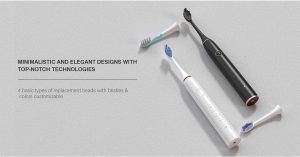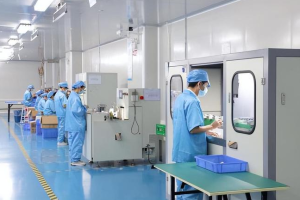The Rise of Sustainability in Electric Toothbrush Manufacturing
As environmental awareness grows, the demand for products made with sustainable materials has become a priority across industries, including oral care. More and more electric toothbrush factories are exploring eco-friendly materials and processes to reduce environmental impact. The shift is especially notable in the production of sonic toothbrushes, where the combination of effective performance and environmental responsibility is key.
Why Sustainable Materials Matter in Electric Toothbrush Manufacturing
For an electric toothbrush factory, using sustainable materials in manufacturing not only aligns with environmental goals but also meets customer demand for greener products. Conventional toothbrushes and electric toothbrushes contribute to plastic waste, as most parts are made from non-biodegradable materials. By incorporating recyclable and renewable resources, manufacturers can significantly reduce waste and carbon emissions, contributing to global sustainability goals. Additionally, sustainable material choices support a brand’s image and appeal to consumers who prioritize eco-friendly options.
Challenges and Innovations in Sourcing Sustainable Materials
Using sustainable material in toothbrush manufacturing, however, presents some unique challenges. Factories must ensure these materials maintain the high quality, durability, and safety expected of oral care products. For example, bioplastics, recycled materials, and even bamboo composites are alternatives to replace traditional plastics. While these alternatives can increase initial costs, many manufacturers view them as worthwhile investments for long-term sustainability and brand differentiation.
Implementing Sustainable Materials in Sonic Toothbrush Production
An example of progress in this area is the manufacturing of sonic toothbrushes using partially recycled or plant-based materials. One electric toothbrush manufacturer successfully introduced a line of sonic toothbrushes that features handles made from 50% recycled plastic, significantly reducing virgin plastic use. This approach not only cut down material costs but also attracted a larger customer base interested in sustainable practices. Additionally, by optimizing the energy consumption of sonic motors, the factory achieved both a performance boost and a reduction in carbon emissions.
The Future Outlook for Sustainable Electric Toothbrush Manufacturing
Looking ahead, electric toothbrush factories are expected to continue innovating in sustainability. Factories are investing in research to discover new materials that maintain performance while minimizing environmental impact. The goal is to create a product that is entirely recyclable, with components that can be easily disassemble for proper disposal. As these factories adopt more sustainable material options, they contribute to an industry-wide shift that could redefine the standard for eco-friendly manufacturing in the oral care sector.
Conclusion
Electric toothbrush factories like Powsmart recognized the importance of adopting sustainable materials, not only as an environmental responsibility but as a competitive advantage in a changing market. By implementing innovative practices and continuously exploring new sustainable options, these factories are setting a new benchmark in the oral care industry, ensuring that high-performance products and environmental stewardship go hand in hand. Contact Powsmart if you have interests in sustainable electric toothbrush business.



-300x169.jpg)

